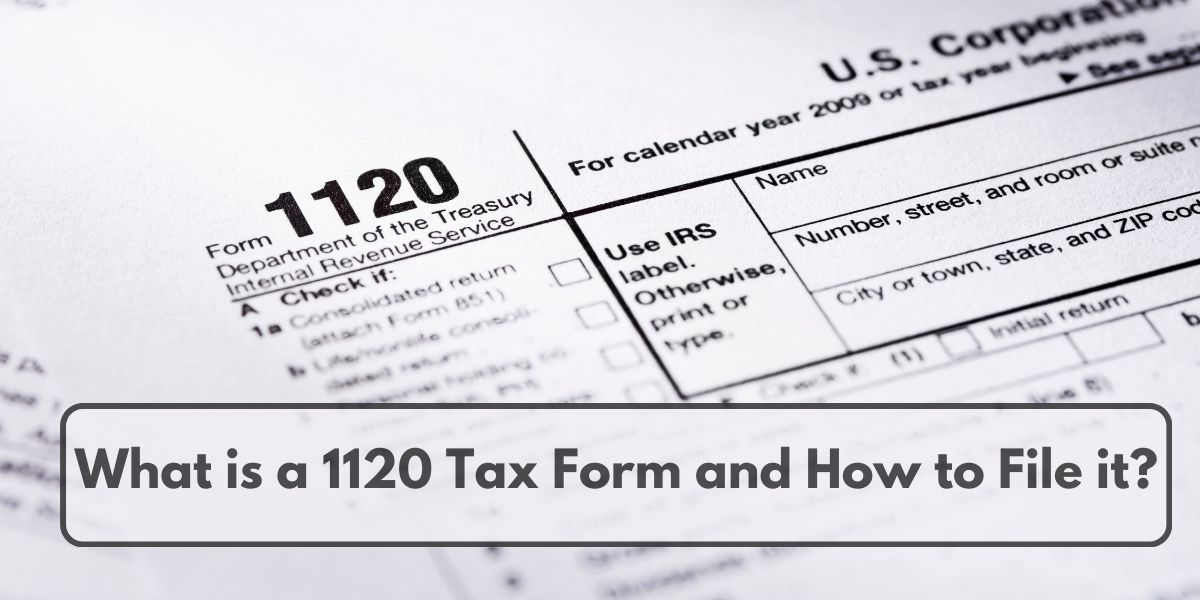Form 1120, the U.S. Corporation Income Tax Return, is an IRS document that corporations use to report their financial activities, including income, losses, gains, and deductions, to determine their tax liability. This form is mandatory for all domestic corporations, excluding those exempt under Section 501.
Variants of Form 1120 cater to specific types of corporations, such as Form 1120-F for foreign entities and Form 1120-S for S corporations. Corporations must file Form 1120 by the 15th day of the 4th month after their fiscal year ends, with extensions available through Form 7004. Filing can be done either electronically or by mail, and the form must be completed accurately with all necessary schedules attached.
Contents
Form 1120
Form 1120 is the IRS form utilized by corporations to report their income, losses, gains, and deductions, and to calculate their income tax liability.
All domestic corporations must file this tax return, even if they are in bankruptcy. But domestic corporations that are exempt under Section 501 do not have to file this tax report.
What is an 1120 Tax Form?
Form 1120 is also known as the U.S. Corporation Income Tax Return. The IRS revises this form annually according to the tax year. Depending on the purpose, corporations may file various associated schedules.
For instance, Form 1120-F is for the Income Tax Return of a Foreign Corporation, Form 1120-H is for the Income Tax Return for Homeowners Associations, and Form 1120-L is for a Life Insurance Company Income Tax Return.
Each variant of this form includes its own set of instructions that provide essential information about the purpose, deadline, and how to fill it out.
How to Download Form 1120?
Corporations needing to file their income tax return can download this tax form from the authorized IRS website.
To download the form:
- Visit the IRS website.
- Click on “Forms and Instructions”.
- Search for Form 1120 and download it.
S corporations can use Form 1120-S to file their income tax returns, which can be downloaded in the same manner as Form 1120.
Who Should File It?
Unless exempt, all corporations must file an income tax return. Domestic corporations filing a special return do not need to file this form.
A domestic entity opting to be taxed as a corporation should file this form. These entities must also file Form 8832 and attach its copy to Form 1120. Businesses that are engaged in the farm should also fill out this form to report their income.
When to File It?
Corporations must file their income tax return by the 15th day of the 4th month after the end of the tax year. This same deadline applies to new corporations filing short-period returns, which must file by the 15th day of the 4th month after their short period ends.
If a corporation’s fiscal year ends on August 30, they should file by the 15th day of the 3rd month after their tax year ends. The IRS offers Private Delivery Services to provide proof of mailing date.
If a corporation cannot file by the deadline, they can apply for an automatic extension. Many corporations use this option to get more time. Information about extensions is available on the IRS website.
For extensions, corporations can use Form 7004. Note that corporations cannot file after the deadline passes; they must file before the deadline to get an extension.
How to File It?
To file Form 1120, corporations must download and fill it with accurate information, reporting income, deductions, losses, etc. The return must be signed and dated by an authorized person, such as the CAO, president, treasurer, vice president, assistant treasurer, or another authorized individual.
This tax form can be filed using paper or electronically. Corporations must attach all applicable schedules in the correct order to ensure efficient and prompt processing.
Initially, fill in the name, address, EIN, incorporation date, and total assets. The first page consists of three main sections: income, deductions and tax, payments, and refundable credits.
The second page contains Schedule C, the third page contains Schedule J, the fourth and fifth pages contain Schedule K, and the sixth page contains Schedules L, M-1, and M-2.
Each section serves a different purpose that corporations must fill in correctly, if applicable. It is crucial to read the instructions before completing the form, as they provide various essential details.
